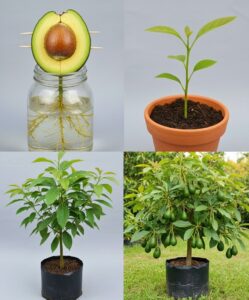Avocado trees are cherished not only for their delicious fruit but also for their lush foliage and attractive blooms.
Growing an avocado tree that blooms vibrantly throughout the year may sound ambitious, but with the right care and environment, it’s achievable—even for gardeners who are new to avocado cultivation.
This guide will walk you through the essential steps to help your avocado tree thrive, bloom beautifully, and potentially produce fruit year-round.

Understanding Avocado Growth and Blooming
Avocado trees (Persea americana) are subtropical plants native to Central and South America. They generally produce flowers in the spring, but with proper care, you can encourage multiple blooming cycles or extended flowering periods. Vibrant blooms indicate a healthy tree and are the first step toward fruit production.
Avocado blooms are small and greenish-yellow, often overlooked but essential for pollination and fruit set.
Choosing the Right Avocado Variety
There are several avocado varieties, but the two most common groups are:
-
-
Mexican or Mexican hybrid: Hardy to cooler climates and tend to have good flowering habits.
-
-
Guatemalan and West Indian: Prefer warmer, frost-free environments.
For year-round blooms, varieties that adapt well to your local climate and have longer flowering periods are ideal. Dwarf varieties are also great for container growing or smaller spaces.
Starting Your Avocado Tree
You can start an avocado tree from a seed or buy a young grafted tree.
-
-
From seed: While fun and economical, avocado trees grown from seeds may take longer to bloom and bear fruit.
-
-
From grafted seedlings: These trees typically bloom and produce fruit faster, making them suitable for year-round bloom goals.
Ideal Growing Conditions
Avocados thrive in warm, sunny environments with well-draining soil.
-
-
Light: Full sun exposure for at least 6 hours daily is crucial for healthy growth and flowering.
-
Temperature: Maintain daytime temperatures between 60-85°F (15-29°C). Avoid frost, as it can damage blooms and foliage.
-





